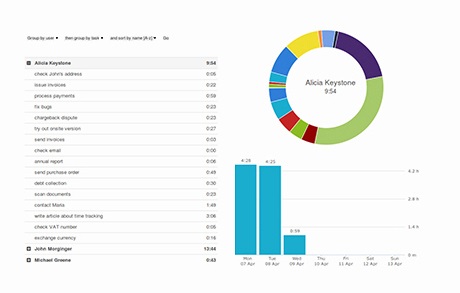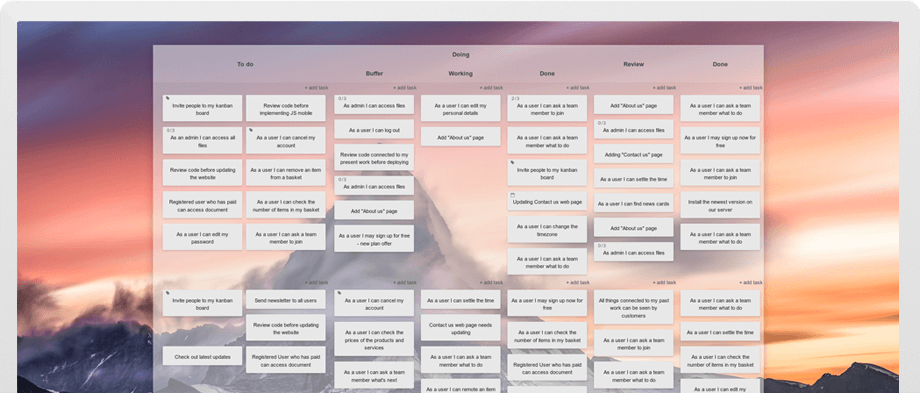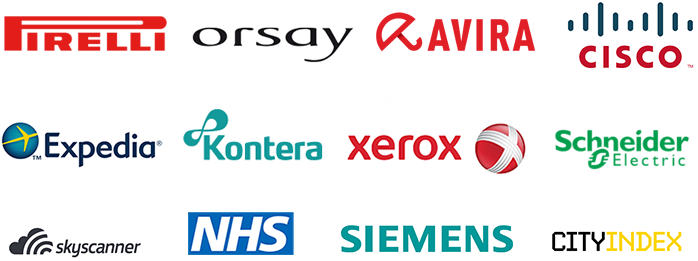Kanban, originating in the 1950s as a system within JIT manufacturing pioneered by Taiichi Ohno at Toyota, relies on colored cards representing vehicle parts to manage inventory levels. The term kanban translates to visual card in Japanese, highlighting the method's reliance on visual cues for maintaining an even and productive workflow. Since the early 2000s, Kanban has transitioned from manufacturing to knowledge-based work scenarios, initially in software development and gradually extending to any process with distinct process steps.
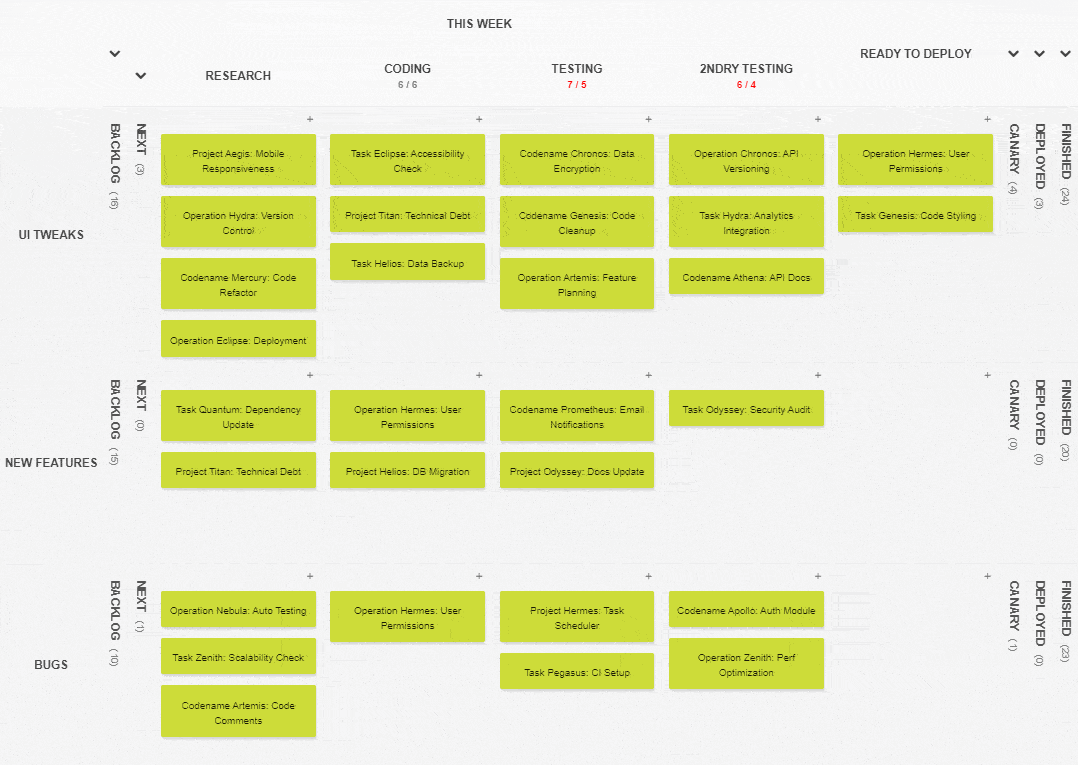
Kanban Principles
1. Visualize the Workflow
The heart of the system lies in visualizing process steps and work items. Whether through physical whiteboards or digital tools, visual representation ensures clear identification of tasks, expectations, ownership, and current status. Different colored cards signify various work types, organized under horizontal swimlanes for additional categorization.
2. Limit Work In Progress
Kanban systems emphasize efficiency by minimizing work in progress. Teams prioritize completing tasks before picking up new ones, enabling early initiation of dependent tasks, preventing resource idleness, and improving focus.
3. Manage and Measure the Flow
Carefully tracking and illustrating process execution allows pinpointing strengths and weaknesses. Immediate identification of goals not met or bottlenecks facilitates timely resolution and process improvement, enhancing predictability and efficiency.
4. Explicitly Define Process Policies
Well-visualized workflows involve clearly defined process rules, guiding team expectations easily. Kanban board columns designate individual process steps' rules, outlining task expectations and definitions.
5. Improve Continuously
A Kanban system is under constant evolution, viewing each improvement opportunity as a chance to simplify and polish the process flow. Employing incremental feedback loops fosters gradual enhancements, emphasizing early detection and swift correction of failures.

What is a Kanban System
in Project Management?
A Kanban system for project management respects at least two Kanban principles: work process visualization and WIP limits. The minimum requirements include dividing the workflow into three categories:
- A backlog of work
- Work in progress column with limited items
- A section for completed items.
Additional columns represent other process stages, providing complete insight into the process state.
How to Implement a Kanban System?
Start by setting up a rudimentary Kanban board, allowing the team to become accustomed to the system and WIP limits while refining the workflow over time. A project board set up in Kanban Tool provides flexibility for adjustments without disrupting ongoing workflow.
For example, if your business process depends on certain events taking place in a designed sequence - you may benefit most from an event-driven board:
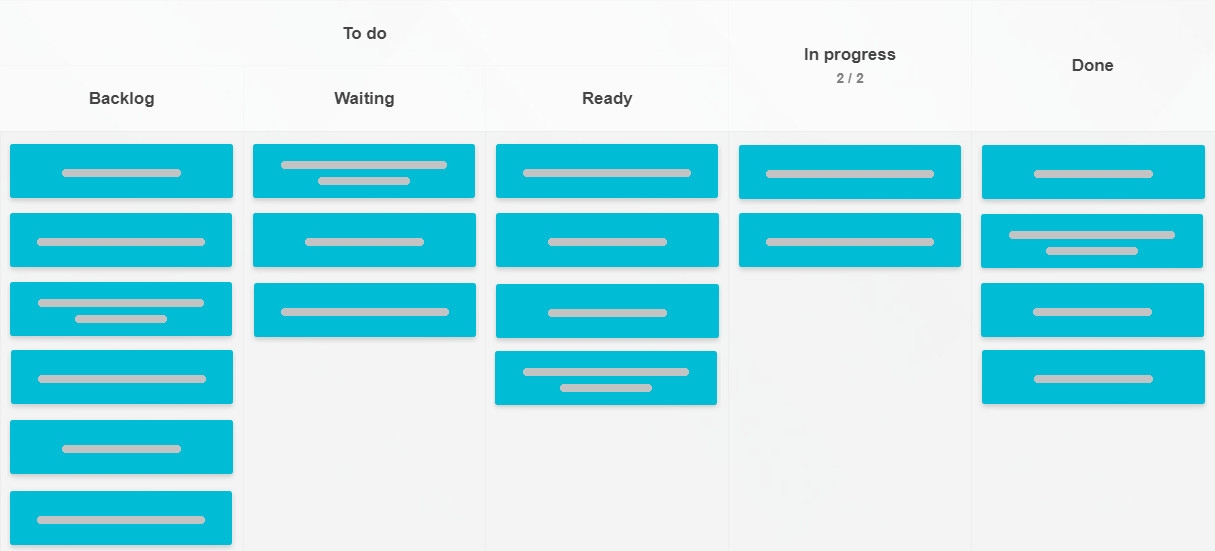
And if your process planning is arranging specific activities in time, Kanban Tool has a board template for that too:
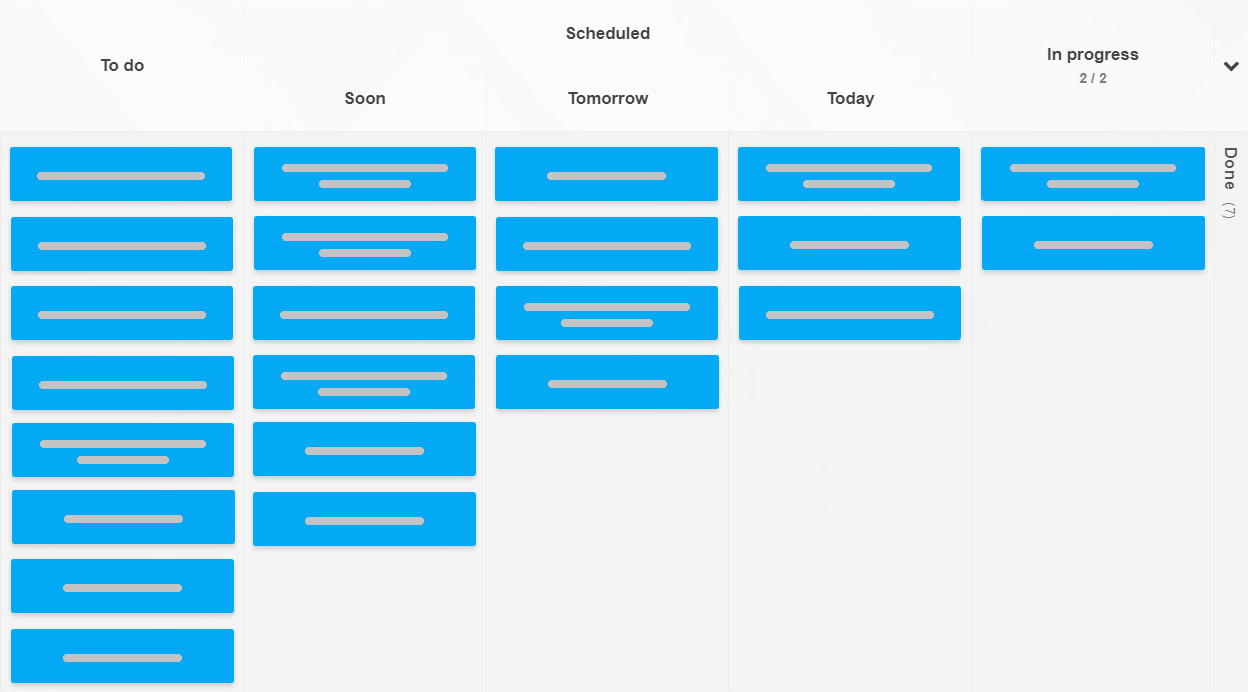
Kanban System Benefits & Limitations
Implementing Kanban may not be feasible for some companies due to the requirement of process stability and continuous progress updates. However, even highly dynamic environments can benefit from monitoring the Work in Progress levels, to maximize productivity and bring order to a potentially chaotic flow.
Working with Kanban-based workflows leads to substantial productivity increases and offers benefits such as simplifying team communication, enhancing focus through WIP limits, reducing waste, and allowing process flexibility for improvement.
Kanban System Metrics
Benchmarking and measuring progress are crucial for gauging team success with the Kanban system. Common metrics, providing insights for continuous improvement with a Kanban system, include:
- Lead and cycle time – the time it takes tasks to traverse the entire process,
- Process throughput – the speed at which tasks are completed on the whole,
- Cumulative flow diagram (CFD) - an overview of the trends in processing tasks built up over time, showing overall process condition and allowing to make data-backed forecasts.
Getting Started
Kanban systems are as effective as they are easy to implement. For smaller, co-located teams, a simple three-column Kanban board on the wall with sticky notes suffices. Larger or distributed teams benefit from web-based Kanban boards, offering shared online spaces for workflow design, task assignment, and real-time tracking. Digital Kanban Tool cards provide additional functionalities such as file attachments, team comments, to-do lists, dependencies, and automation.
Try Kanban Tool with your team to experience probably the most customizable project boards on the market with power-ups, time tracking, reporting, process automation, and self-hosting capabilities, improving team productivity of even the most webtools-averse teams out there.





